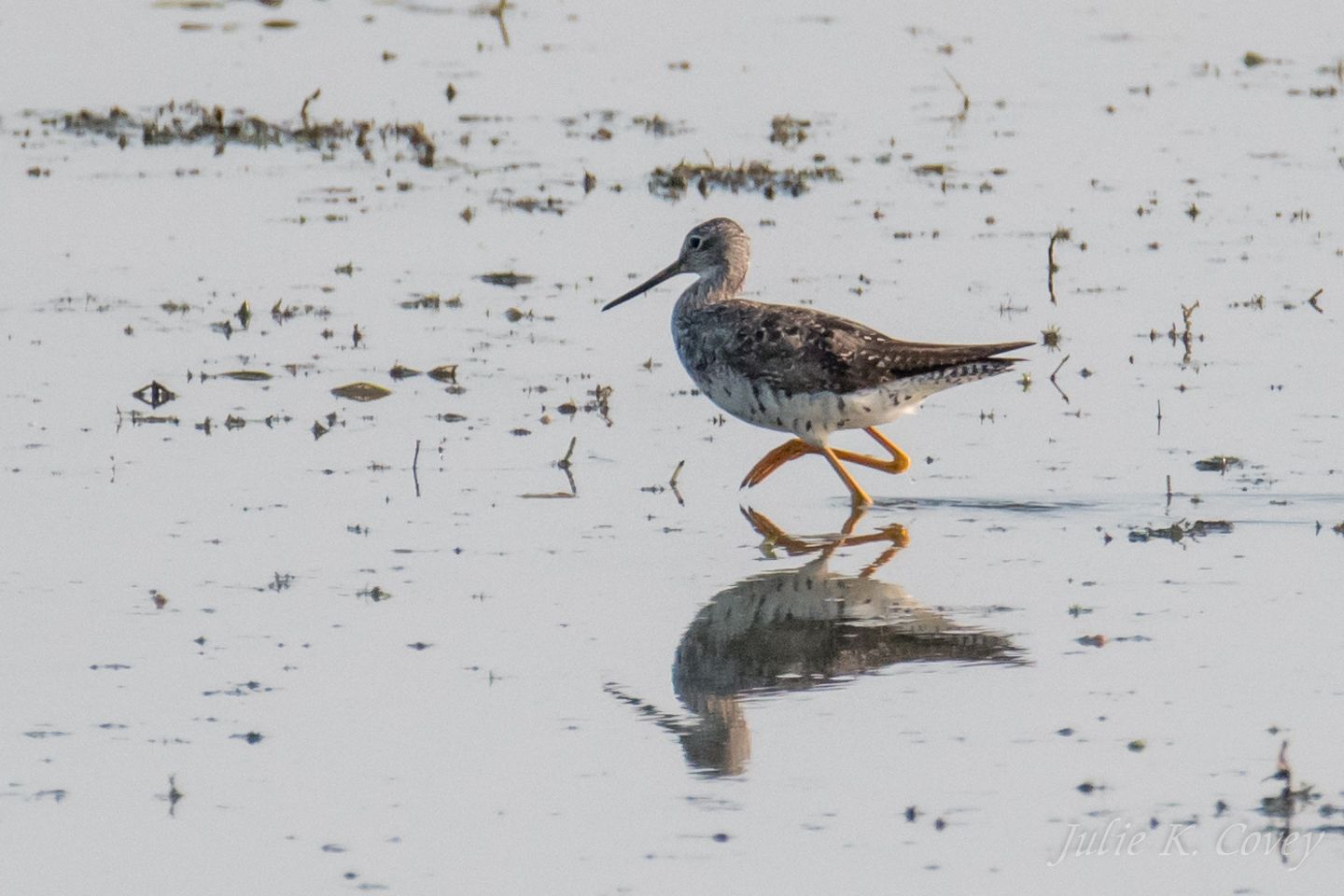
Migration stopover habitat use has been a limiting factor for shorebirds in the North Country for at least the last century and three quarters. These birds were market hunted, whenever they were present, until receiving protection from the Migratory Bird Treaty Act of 1918.
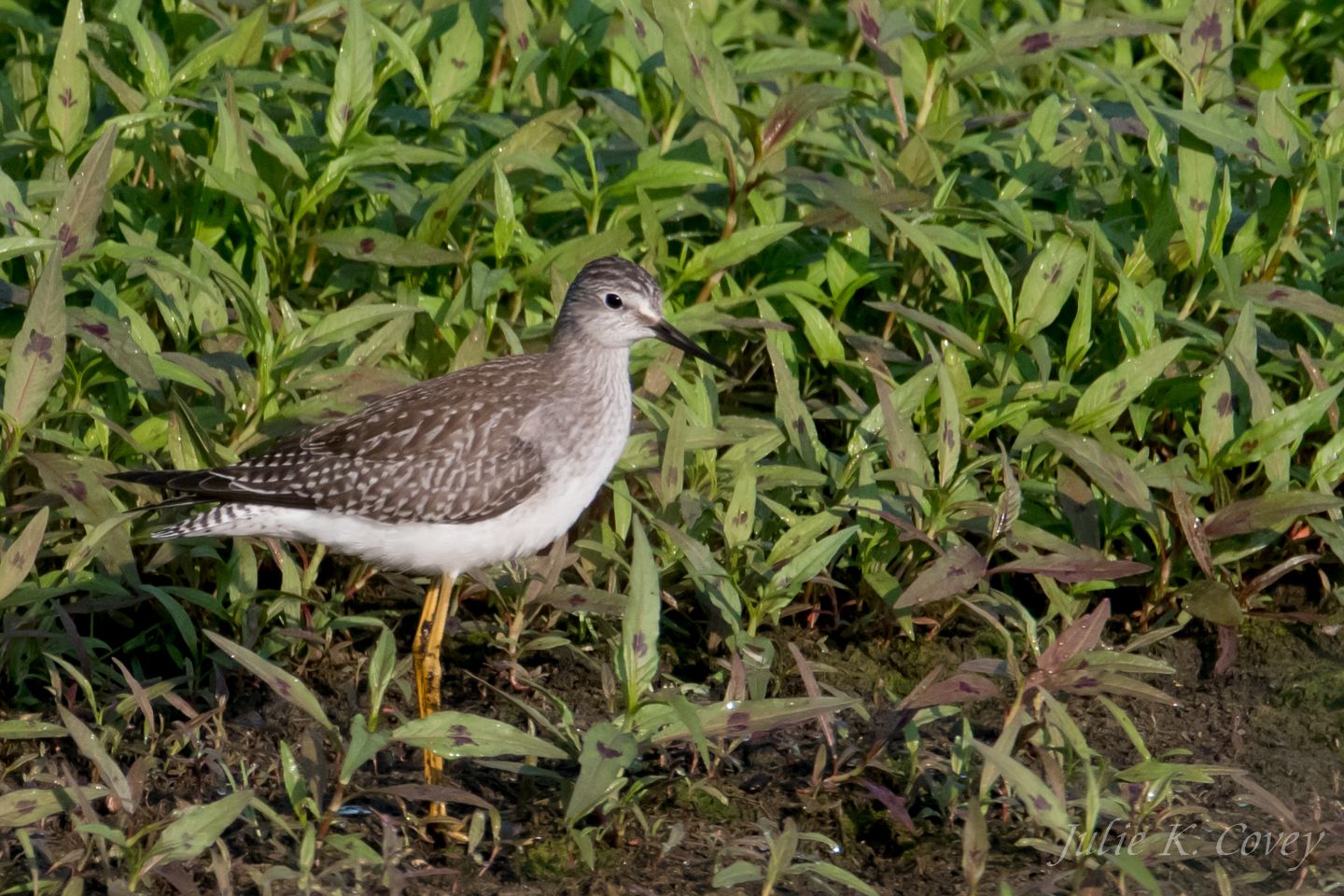
Most species survived the market hunting massacres and recovered some of their former abundance by the 1950s. Even then, there were few concentration areas for these long-distance travelers in our region. El Dorado Nature Preserve, in southwestern Jefferson County, was the most productive of known local stopover sites. Protected by The Nature Conservancy in 1968, it hosted shorebird concentrations in the low thousands on some late summer days. Thus this site attracted birders from many parts of Upstate New York and adjacent Canada. Other local areas used by migrants were more hit and miss depending on water levels, rainfall patterns and human land use. Unlike Atlantic coastal areas, shorebird habitat here is unpredictable.
Unfortunately, by the late 1980s, fall migrant shorebird numbers began to decline substantially as sightings throughout the region decreased. Some of this was due to changes in the ecology of the St. Lawrence River and Lake Ontario. Pollution laws and arrival of the invasive zebra/quagga mussels greatly impacted nutrient and algae levels present. Cladophora green algae blooms decreased as eutrophication (increase of nutrients) of waters lessened. This in turn reduced the invertebrates that fed on rotting algae tossed ashore by wave action. Shorebirds who fed on the invertebrates thus had less available food. While generally the return of these water bodies to a more natural nutrient poor state is a good thing, it has had consequences for shorebirds.
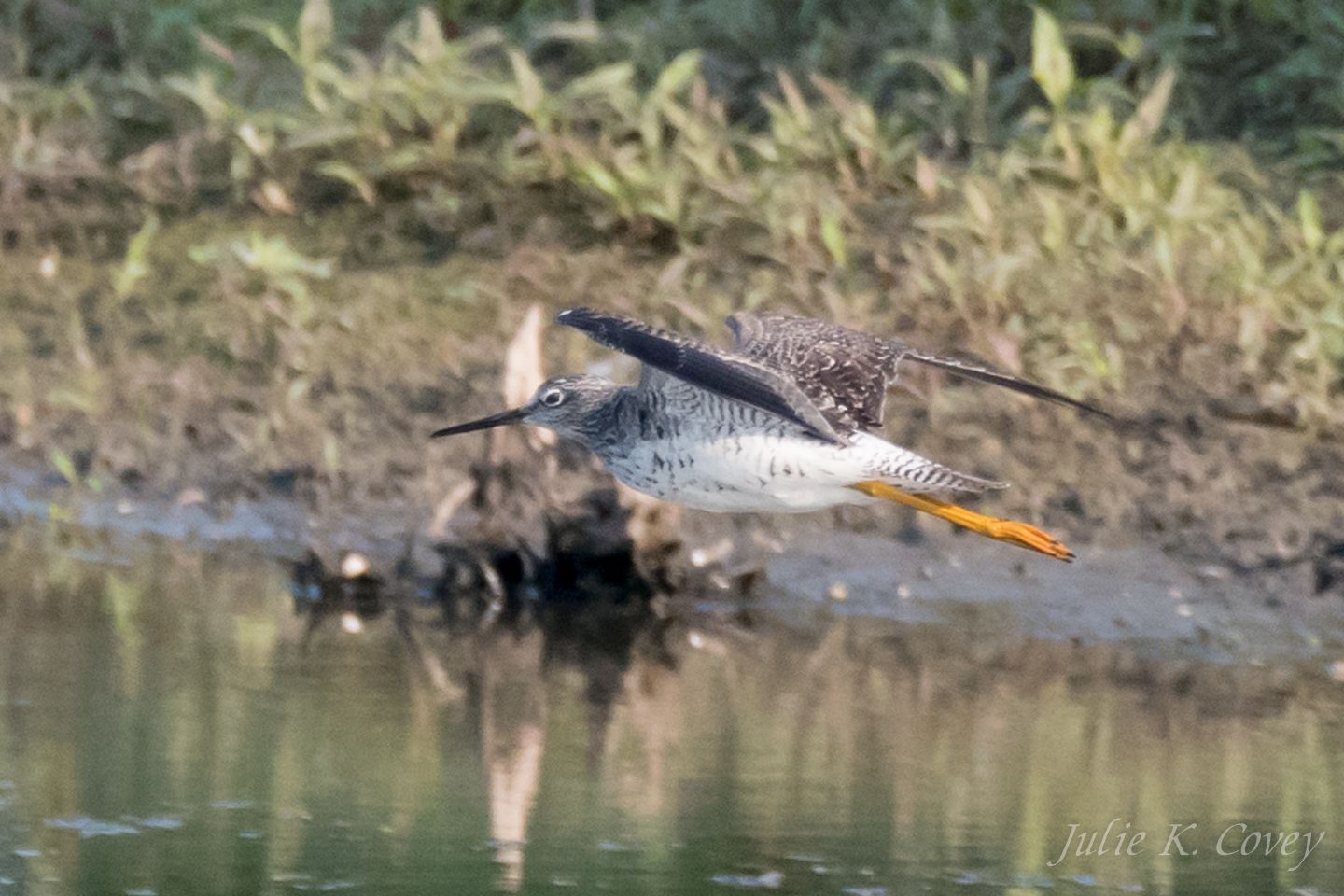
eg of the journey. Frequent human disturbance alters the energy balance of these birds and impacts their condition for travel.
Most shorebirds breed in the open Boreal Forest and on the Arctic Tundra. These great world travelers may span the globe, twice a year, in migration. Birds nesting on Baffin Island in the high Arctic may spend the Northern winter in Tierra del Fuego. They have evolved to chase seasonally abundant food resources across the globe. These are truly the birds of summer, pursuing endless fine feeding opportunities throughout their lives. Survival means moving from one smorgasbord to another on a precise schedule. They have evolved as species that are very good at exploiting their narrow ecological niches for survival. Unfortunately, when the planet’s dominate species changes game rules, such specialized species are usually the ones most at risk.
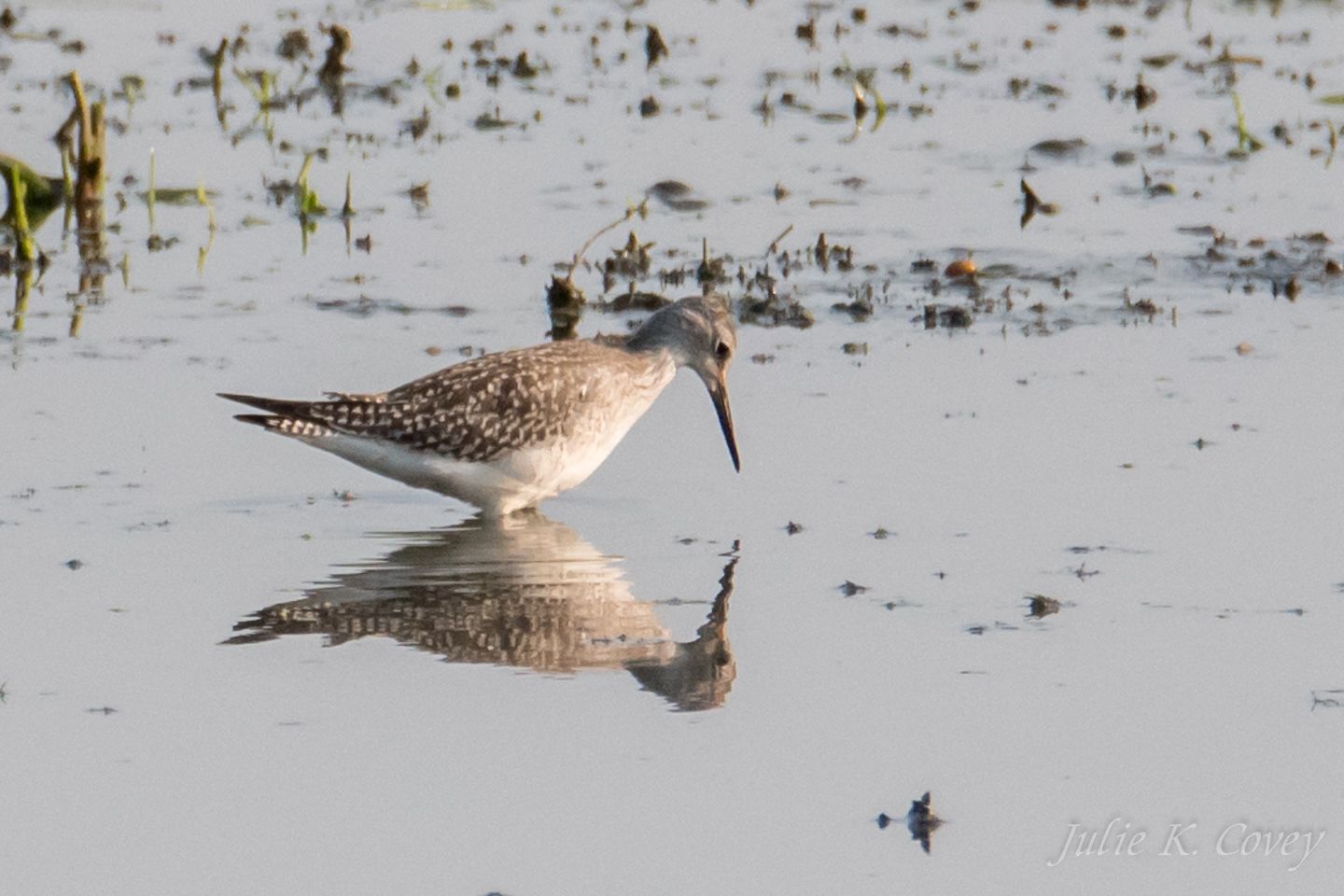
While spring migration of shorebirds is a frantic affair, fall movements are very leisurely. It’s a short summer in the Arctic and as the last north arriving migrants are breeding, some species adults are already heading south. In the Thousand Islands region, the interval between these two occurrences is less than three weeks. The Arctic summer allows only one good shot at successful reproduction. If your nest or young are predated after they are well along in the cycle, there is no time to try again. The first southbound shorebirds are unsuccessful breeding adults that will have to wait till next summer.
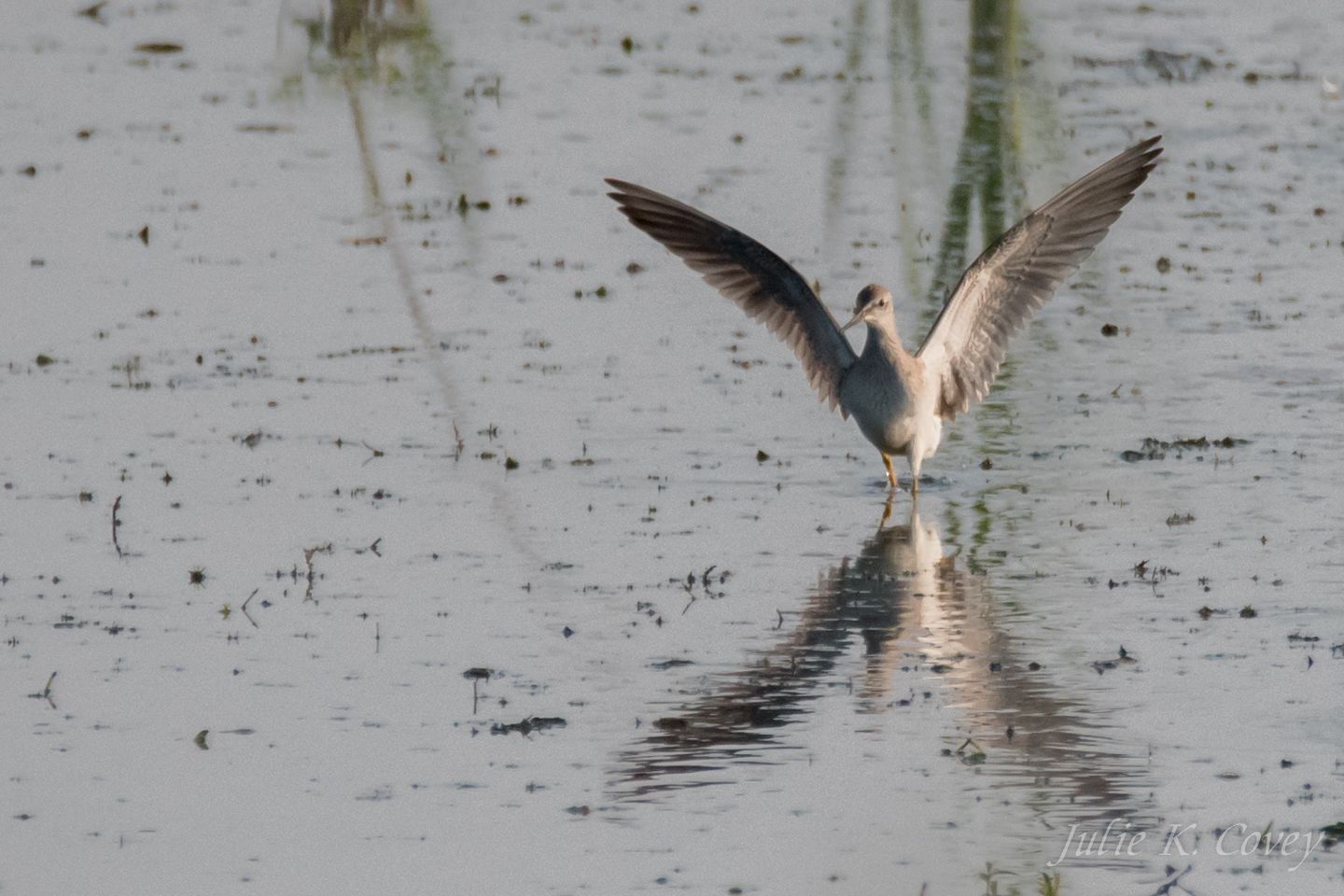
Information collected by me at El Dorado in the 1980s does show that our region is an important migration corridor for certain age groups of some species. Most fall migrant adult Semipalmated Sandpipers, presumably in fine physical condition, stage along the northeast Atlantic coast before flying over water to northern South America. Species counts, at the Manomet Bird Observatory in Massachusetts, of birds using this overwater route drop-off dramatically in late August. In contrast my data from El Dorado strongly indicates immatures use a more inland route to their wintering grounds. They are probably less physically prepared than adults for an arduous sea crossing.
So indeed, protection of suitable habitat locally for fall shorebird migrants has conservation importance. The efforts of the Thousand Islands Land Trust in preserving small islets and shoals will have definite benefit to smaller shorebird species such as the Semipalmated Sandpiper. Protected water bird nesting Islands, such as the Eagle Wings off Clayton and Little Galloo in Lake Ontario, definitely attract many fall migrants. Presumably there is increased safety in numbers should a wandering Peregrine Falcon pass by. If you blend in with the crowd it may eat someone else.
Even in late summer and fall, observing shorebirds locally is a challenge. El Dorado still hosts some numbers when water levels are reasonable. Often the small islands and shoals, of the River will host birds for variable periods of time. There can be high turnover amongst migrants, with some remaining only a few minutes, while others are present for days. Boating birders should carefully check small thinly vegetated islands and shoals, as well as muddy wetland edges,for migrants. Shore-bound observers can also check rain puddles in farm fields and other transitory wet areas. Seeing these interesting globetrotters is well worth the effort, although identifying smaller species can be a real challenge. That, however, is a topic for another time.
[Photographs by Julie Covey can be found on Facebook and Instagram pages named “Nature in NNY.” (https://www.facebook.com/NatureinNNY/)]
By Sherri Leigh Smith
Sherri Leigh Smith is a senior Ornithologist, Avian Ecologist and Conservationist working to preserve bird populations in Northern New York.
Editor’s Note: This editor is both pleased and appreciative to Sherri Leigh Smith for taking the time to help us understand more about nature in the islands. You can read her past articles here. Already I am getting better at looking at the sky and those flying by.
Posted in: Volume 13, Issue 9, September 2018, Nature
Please click here if you are unable to post your comment.
